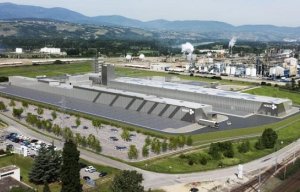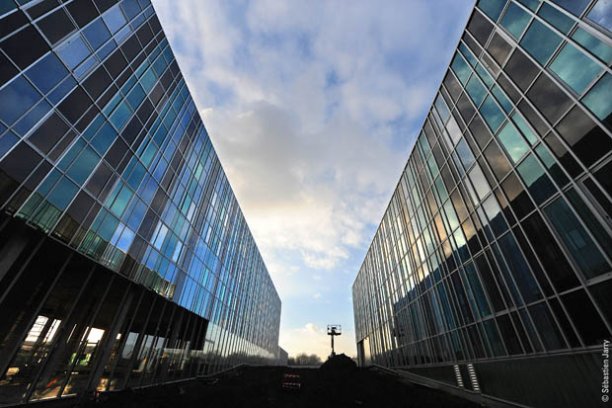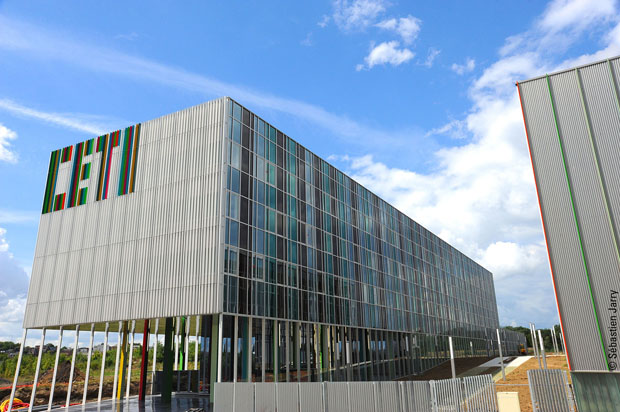
Hexcel opens new carbon fibre production line
A new ‘cutting edge’ facility for technical textiles, nonwovens and composites development opened its doors in the city of Roubaix, in the Lille region of Lille of Northern France, this month.

25th October 2012
Innovation in Textiles
|
Roubaix
A new ‘cutting edge’ facility for technical textiles, nonwovens and composites development opened its doors in the city of Roubaix, in the Lille region of Lille of Northern France, this month.
The Lille Region has long been associated with the textiles industry and has now made the sector one of its priorities. CETI, the European Centre for Innovative Textiles (Centre Européen des Textiles Innovants), was launched on the 10 October with the aim of assisting the growth of the Lille region's textile sector, which according to CETI, is forecast to expand by 21% between now and 2017.
The opening of CETI attracted some of the top players in the textile industry, including Mr Arnold Wilkie from US-based Hills Inc., along with Mr Hideki Hoshiro from the Japan Chemical Fibers Association. The event also included some top-level round tables, shedding light on the most innovative materials.
“CETI is the most recently founded research facility and prototyping centre of its kind, which is dedicated to new textile applications. As the only such platform in Europe, CETI offers cutting-edge technologies to support the development of new intelligent-textile applications internationally. CETI is unique in its use of creative techniques in order to accelerate the innovation process, developing textile solutions by first identifying possible requirements or uses,” a CETI spokesperson said.
CETI is in Phase 1 of its configuration and says it is currently comparable to the Nonwovens Institute in Raleigh (USA), which combines contributions to innovation from over 60 major companies that develop new textile materials.
Throughout this Phase, the focus will be on CETI's high-tech spinning facility (of which there are only four similar examples worldwide, CETI says), supporting the development of the new, high-performance fibres of the future.
“Advanced fibres will be indispensable in relation to medical devices, but will also have applications in acoustic-insulation and ultra filtration equipment,” CETI adds.
Additionally, the centre's drylaid nonwovens facility aims to use new combinations of technologies in order to develop high-tech industrial solutions. Techniques such as calandering will be employed, which will provide thermal consolidation of nonwovens by combining temperature and pressure.

Phase 2 of CETI's configuration, scheduled for 2013/2014, will focus on the manufacturing process, primarily for the composite and technical textile markets and will involve knitting, weaving and braiding technologies.
“The developments brought about by CETI's progression to Phase 2 will underpin the centre's originality in gathering such an array of technological equipment and cutting-edge research projects in a single location,” the organisation said.
“As technical textiles develop, the functional and flexible nature of new fibres makes them the solution for countless innovative applications in a range of industries.”
The opening of CETI coincided with the launch of the third Futurotextiles exhibition, allowing both textile industry professionals and the general public to learn more about the technical textiles sector. After touring the world for six years, from France to China, via Spain and Indonesia, Futurotextiles has come to CETI for its third event.
Futurotextiles is an exhibition that brings together science, technology, design, fashion and art, all based around innovative textiles. The event aims to raise public awareness about technical textiles, the latest innovations in the field, and the main challenges the sector faces.
The exhibition, which has focused, this year, on the theme of ultra-lightness, displays the results of juggling cloud-like materials and experimenting with fabrics made from coffee, while showcasing micro-encapsulated lace and ‘never before seen’ materials.
Helen Storey's Catalytic Dress, Elisa Strozyk's wooden garments, Jum Nakao's paper and lace dresses, and Janaïna Milheiro's Angel's Coat are exhibited alongside such objects as a violin made from flax fibre and an inflatable surf board.

Business intelligence for the fibre, textiles and apparel industries: technologies, innovations, markets, investments, trade policy, sourcing, strategy...
Find out more